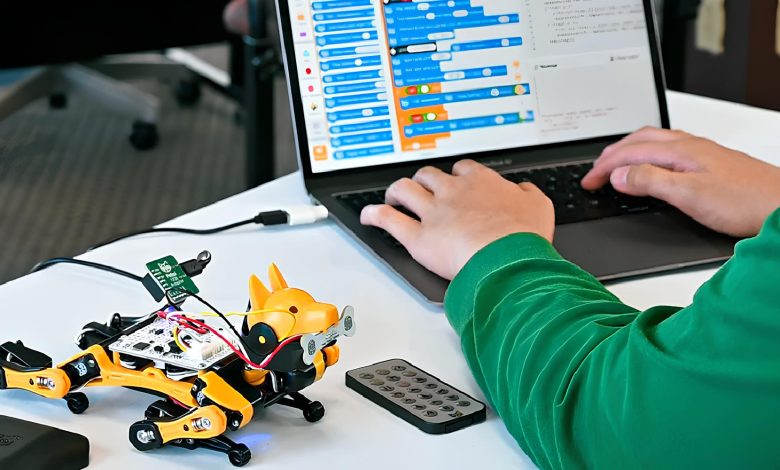Algorithm

Every time you search on Google, scroll through TikTok, or get GPS directions, an algorithm quietly works in the background. But here’s the thing—most people don’t even realize algorithms control so much of their daily life. That hidden layer of logic decides what you see, how fast apps respond, and even which ads pop up on your screen. Sounds powerful, right? The truth is, understanding algorithms isn’t just for computer scientists—it’s becoming an essential skill for everyone in a digital-first world.
What Is an Algorithm?
At its simplest, an algorithm is a step-by-step set of instructions designed to solve a problem or accomplish a task. Think of it like a recipe. A recipe tells you which ingredients to gather and which steps to follow to bake a cake. Similarly, an algorithm tells a computer what actions to take and in what order.
For example, a sorting algorithm arranges numbers from smallest to largest. A search algorithm finds a specific name in a massive contact list. Algorithms may seem technical, but their core idea is simple: clear instructions that lead to a solution.
Everyday Examples of Algorithms
Algorithms aren’t locked inside computers—they’re everywhere around us. Let’s look at some common examples:
- Cooking Recipes: Step-by-step instructions for preparing a dish.
- Traffic Lights: Algorithms decide the timing of lights to manage traffic flow.
- Navigation Apps: GPS systems use algorithms to calculate the fastest route.
- Social Media Feeds: TikTok, Instagram, and Facebook rely on algorithms to decide which content appears on your feed.
- Online Shopping: Amazon uses recommendation algorithms to suggest products you might like.
In short, whenever a task can be broken into steps, there’s likely an algorithm at work.
Why Algorithms Matter in Computer Science
In computer science, algorithms are the backbone of every program and application. They provide the logical structure that allows software to process information efficiently. Without algorithms, even the most powerful computer would be useless—it wouldn’t know how to solve problems.
Consider searching for a word in a huge document. Without an algorithm, a computer might check each word one by one, wasting time. But with an efficient search algorithm, it finds the word in seconds. This efficiency is why algorithms are central to programming, data processing, cybersecurity, artificial intelligence, and countless other areas.
Types of Algorithms (Sorting, Searching, etc.)
There are many kinds of algorithms, each designed for different problems. Some of the most common include:
- Sorting Algorithms: Arrange data in order. Examples: Bubble Sort, Quick Sort, Merge Sort.
- Searching Algorithms: Find specific data in a structure. Examples: Linear Search, Binary Search.
- Graph Algorithms: Help map networks like roads, social connections, or communication systems. Examples: Dijkstra’s Algorithm, A*.
- Encryption Algorithms: Protect sensitive data by encoding it. Examples: RSA, AES.
- Machine Learning Algorithms: Allow computers to learn patterns from data. Examples: Decision Trees, Neural Networks.
Each algorithm has its strengths and weaknesses, often measured by efficiency—how fast it runs and how much memory it uses.
How Algorithms Shape Our Daily Lives
It’s easy to underestimate algorithms because they work silently, but they impact nearly every decision we make:
- Search Engines: Google’s search algorithm determines what results you see first.
- Banking: Algorithms detect fraud by spotting unusual transactions.
- Healthcare: Diagnostic algorithms help doctors spot diseases early.
- Entertainment: Netflix and Spotify use algorithms to recommend movies and music tailored to your taste.
- Job Applications: Hiring systems filter resumes using keyword-matching algorithms.
Sometimes, this influence raises concerns. For example, recommendation algorithms can create “filter bubbles,” showing users only content that aligns with their existing beliefs. This makes it vital to understand how algorithms shape the information we consume.
Future of Algorithms in AI and Robotics
Looking ahead, algorithms will only become more powerful. Artificial intelligence, self-driving cars, smart homes, and advanced robotics all rely on increasingly complex algorithms. Imagine a robot assistant that not only follows instructions but also learns from your habits—that’s possible through machine learning algorithms.
In robotics, algorithms determine how machines move, adapt, and respond to their environments. In AI, they help computers make decisions that once required human judgment. As technology evolves, algorithms won’t just support daily life—they’ll redefine it.
The challenge will be ensuring algorithms remain ethical, transparent, and unbiased. After all, the rules we teach machines can shape entire societies.
1. What is the simplest definition of an algorithm?
An algorithm is a step-by-step set of instructions to solve a problem or complete a task.
2. Are algorithms only used in computers?
No. Algorithms exist in everyday life—like recipes, instructions, or traffic systems.
3. What are the most common types of algorithms?
Sorting, searching, graph, encryption, and machine learning algorithms are among the most widely used.
4. Why are algorithms important in AI?
Algorithms enable AI systems to learn patterns, make predictions, and adapt to new data.
5. Can algorithms be biased?
Yes. Algorithms reflect the data and rules they are trained on. If the data is biased, the algorithm can also produce biased results.